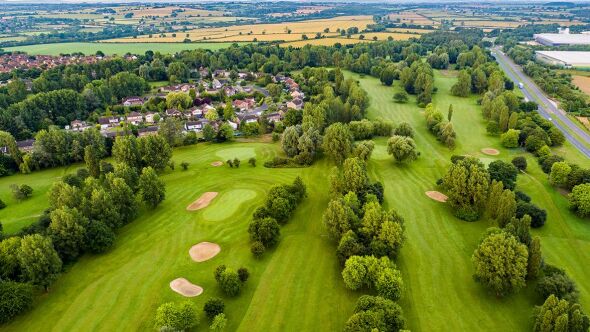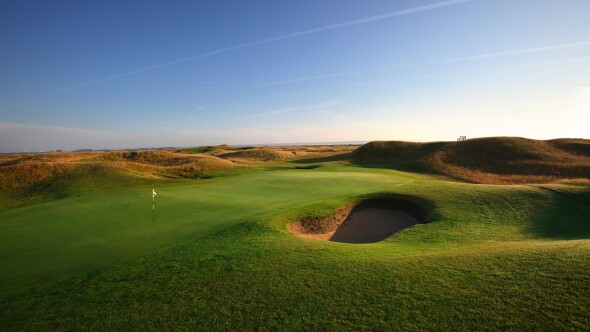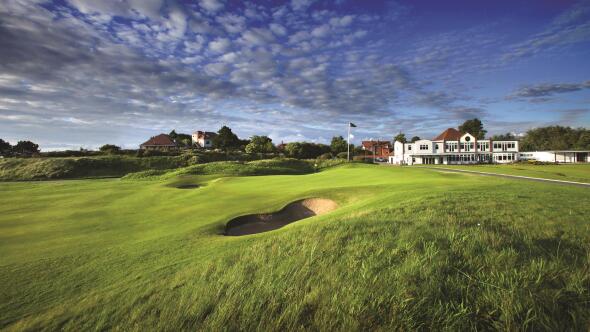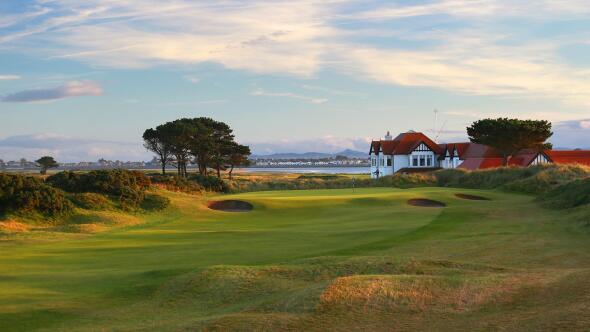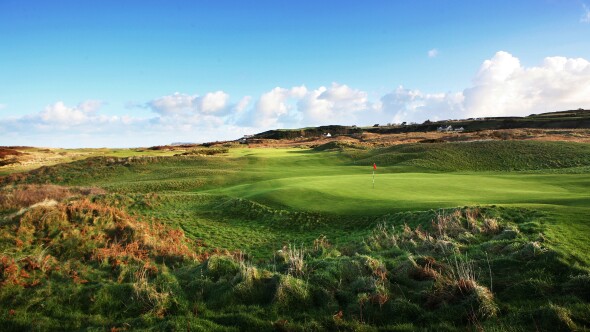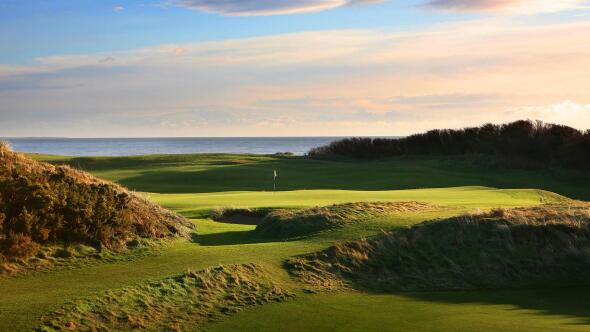Woburn Golf & Country Club - Duke's Course

About
Holes
18
Type
Semi-Private
Style
Parkland
Par
72
Length
6971 yards
Slope
136
Rating
73.9
| Tee | Par | Length | Rating | Slope |
|---|---|---|---|---|
| White | 72 | 6971 yards | 73.9 | 136 |
| Yellow | 72 | 6565 yards | 72.1 | 134 |
| Red (W) | 75 | 6065 yards | 75.7 | 141 |
| Red | 72 | 6065 yards | 70.2 | 130 |
Scorecard for Dukes Course
Metrics:
| Hole | 1 | 2 | 3 | 4 | 5 | 6 | 7 | 8 | 9 | Out | 10 | 11 | 12 | 13 | 14 | 15 | 16 | 17 | 18 | In | Total |
|---|---|---|---|---|---|---|---|---|---|---|---|---|---|---|---|---|---|---|---|---|---|
| White M: 73.9/136 | 514 | 385 | 134 | 395 | 517 | 206 | 473 | 409 | 177 | 3210 | 404 | 505 | 193 | 430 | 564 | 435 | 449 | 425 | 356 | 3761 | 6971 |
| Yellow M: 72.1/134 W: 78.6/147 | 478 | 363 | 122 | 366 | 497 | 169 | 465 | 401 | 157 | 3018 | 376 | 478 | 181 | 407 | 555 | 421 | 412 | 395 | 322 | 3547 | 6565 |
| Red M: 70.2/130 W: 75.7/141 | 450 | 341 | 121 | 351 | 444 | 127 | 432 | 378 | 141 | 2785 | 354 | 456 | 155 | 389 | 474 | 401 | 383 | 369 | 299 | 3280 | 6065 |
| Handicap | 9 | 10 | 18 | 3 | 15 | 8 | 1 | 6 | 16 | 12 | 13 | 17 | 4 | 7 | 5 | 2 | 11 | 14 | |||
| Par | 5 | 4 | 3 | 4 | 5 | 3 | 4 | 4 | 3 | 35 | 4 | 5 | 3 | 4 | 5 | 4 | 4 | 4 | 4 | 37 | 72 |
| Handicap (W) | 11 | 12 | 17 | 3 | 8 | 5 | 1 | 10 | 14 | 7 | 6 | 18 | 13 | 4 | 15 | 2 | 9 | 16 |
Course Details
Year Built
1976
Golf Season
Year round
Rentals/Services
Carts
Yes
Pull-carts
Yes
Clubs
Yes
Practice/Instruction
Driving Range
Yes
Golf School/Academy
Yes
Golf Simulator
Yes
Teaching Pro
Yes
Pitching/Chipping Area
Yes
Indoor Practice
Yes
Putting Green
Yes
Policies
Walking Allowed
Yes
Dress code
Proper attire is required.
Available Facilities
Clubhouse, Banquet FacilitiesAvailable Activities
Swimming, Billiards
The Best Way To Book Is With GolfPass+
10 rounds of waived fees
$120 in tee time credits
Tee Time Protection
Redeem GolfPass points
Reviews
5.0
I Recommend This Course
I loved the feel of the Dukes
I have managed to play all three courses at Woburn and have to say that the Dukes was my favorite. A great test of golf in wonderful surroundings. The greens were very true and in excellent condition.
Conditions
Good
Value
Good
Layout
Excellent
Friendliness
Excellent
Pace
Good
Amenities
Excellent
Difficulty
Somewhat Challenging
Business Tools for Golf Course Operators
Nearby Courses
Golf Packages
Royal St George’s Golf Package
FROM $527 (USD)
LONDON| Staying on the scenic east coast of Kent, you will be situated in the perfect position to play 3 past and present Open Championship Courses. After taking on this accomplishing feat, enjoy a more relaxing round at Littlestone. Take in the amazing views of the English Channel at North Foreland and finish the day back at the hotel enjoying exquisite dining. A golf tour to Kent is certainly one to organise!
England’s Royal Golf Package
FROM $587 (USD)
SOUTHPORT | Experience outstanding golf along England’s golf coast with a tour of some of the most famous courses England has to offer. Take on the 3 Royal courses, including Royal Lytham & St Annes and Royal Birkdale which are 2 of only 3 golf clubs to have hosted The Walker Cup, Ryder Cup and The Open. All from a convenient central location, this trip is definitely a must do for any links golf enthusiast!
Dublin Links Golf Package
FROM $427 (USD)
DUBLIN, IRELAND | Enjoy 7 nights' accommodations at the Grand Hotel Malahide and 5 rounds of golf at County Louth Golf Club (Baltray), Portmarnock Old Golf Club, The Island Golf Club, Royal Dublin Golf Club, and Portmarnock Links at Portmarnock Hotel & Golf Links.
Northern Ireland & Dublin Classic Golf Tour
FROM $487 (USD)
NORTHERN IRELAND | Tour across Northern Ireland and Dublin for a sensational 10 nights, playing an array of golf courses each one with something unique to offer. Play the best course in the world at Royal County Down, experience the 3 Royals throughout your trip, and take in the sensational views at Castlerock and The Island Golf Club. This tour isn’t short of outstanding golf combined with iconic cities and should definitely be on your golf bucket list!
Royal County Down Golf Package
FROM $577 (USD)
NORTHERN IRELAND | Enjoy 7 nights bed & breakfast at the Slieve Donard Resort and 5 rounds of golf at Annesley Links at Royal County Down Golf Club, Ardglass Golf Club, Championship Links at Royal Country Down Golf Club (x2 rounds), and Royal Belfast Golf Club.
Course Layout






















